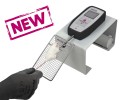Authors
U Bala, M Leong, CL Lim, HK Shahar, F Othman, M-I Lai, Z-K Law, K Ramli, O Htwe, K-H Ling, P-S Cheah
Lab
Universiti Putra Malaysia, Serdang, Selangor, Malaysia
Journal
PLOS One
Abstract
Background Down syndrome (DS) is a genetic disorder caused by presence of extra copy of human chromosome 21. It is characterised by several clinical phenotypes. Motor dysfunction due to hypotonia is commonly seen in individuals with DS and its etiology is yet unknown. Ts1Cje, which has a partial trisomy (Mmu16) homologous to Hsa21, is well reported to exhibit various typical neuropathological features seen in individuals with DS. This study investigated the role of skeletal muscles and peripheral nerve defects in contributing to muscle weakness in Ts1Cje mice.
Results Assessment of the motor performance showed that, the forelimb grip strength was significantly (P<0.0001) greater in the WT mice compared to Ts1Cje mice regardless of gender. The average survival time of the WT mice during the hanging wire test was significantly (P<0.0001) greater compared to the Ts1Cje mice. Also, the WT mice performed significantly (P<0.05) better than the Ts1Cje mice in the latency to maintain a coordinated motor movement against the rotating rod. Adult Ts1Cje mice exhibited significantly (P<0.001) lower nerve conduction velocity compared with their aged matched WT mice. Further analysis showed a significantly (P<0.001) higher population of type I fibres in WT compared to Ts1Cje mice. Also, there was significantly (P<0.01) higher population of COX deficient fibres in Ts1Cje mice. Expression of Myf5 was significantly (P<0.05) reduced in triceps of Ts1Cje mice while MyoD expression was significantly (P<0.05) increased in quadriceps of Ts1Cje mice.
Conclusion Ts1Cje mice exhibited weaker muscle strength. The lower population of the type I fibres and higher population of COX deficient fibres in Ts1Cje mice may contribute to the muscle weakness seen in this mouse model for DS.
BIOSEB Instruments Used:
Grip strength test (BIO-GS3)

 Douleur - Allodynie/Hyperalgésie Thermique
Douleur - Allodynie/Hyperalgésie Thermique Douleur - Spontanée - Déficit de Posture
Douleur - Spontanée - Déficit de Posture Douleur - Allodynie/Hyperalgésie Mécanique
Douleur - Allodynie/Hyperalgésie Mécanique Apprentissage/Mémoire - Attention - Addiction
Apprentissage/Mémoire - Attention - Addiction Physiologie & Recherche Respiratoire
Physiologie & Recherche Respiratoire
 Douleur
Douleur Métabolisme
Métabolisme Système moteur
Système moteur Neurodégénérescence
Neurodégénérescence Thématiques transversales
Thématiques transversales Système musculaire
Système musculaire Functions de motricité générale
Functions de motricité générale Troubles de l'humeur
Troubles de l'humeur Other disorders
Other disorders Joints
Joints Système Nerveux Central (SNC)
Système Nerveux Central (SNC)  Système sensoriel
Système sensoriel
